#I want to talk to the person who decided to give a robot jodhpurs
Explore tagged Tumblr posts
Text


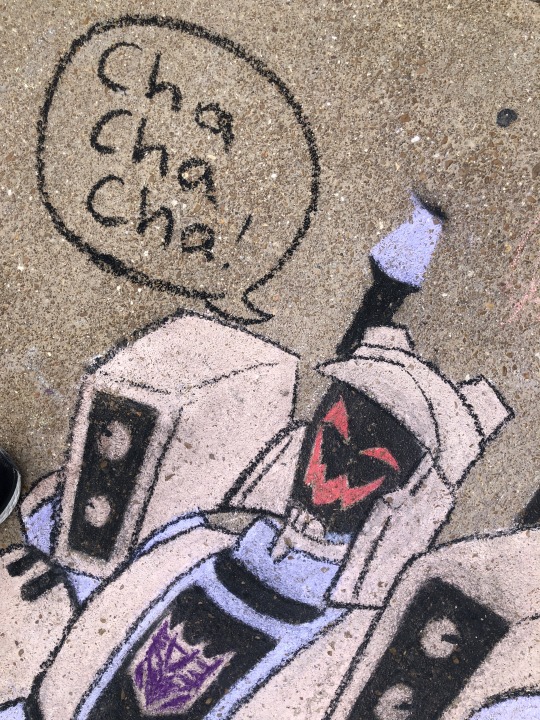
This is all I drew Sunday if Anime St Louis because he took, like, two hours. It’s my little German boy from Transformers Animated and I’m glad some people recognized him too. I had to take a picture from top and bottom because he’s about 7 feet long and there wasn’t a good way to take a pic without getting distorted perspective.
#chalk art#transformers#Blitzwing#transformers animated#tfa#I want to talk to the person who decided to give a robot jodhpurs#I just wanna know what they’re like#my legs hurt so bad from being a chalk cryptid for two days#anime st louis#astl 2024
106 notes
·
View notes
Photo
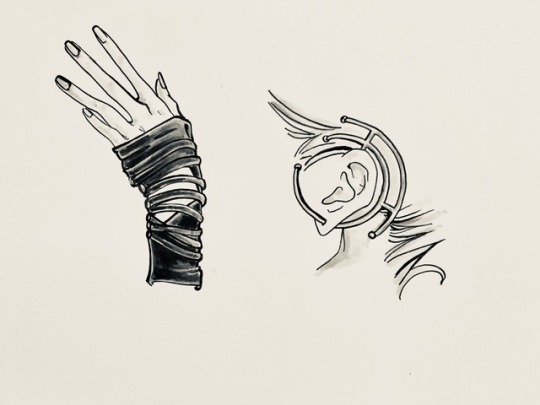

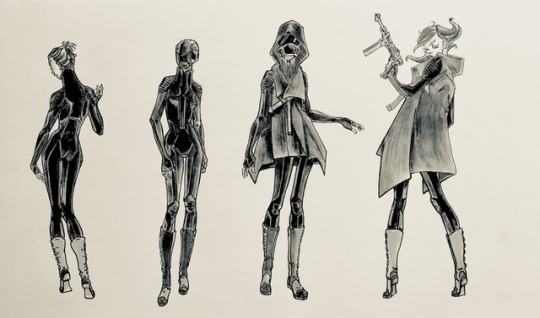
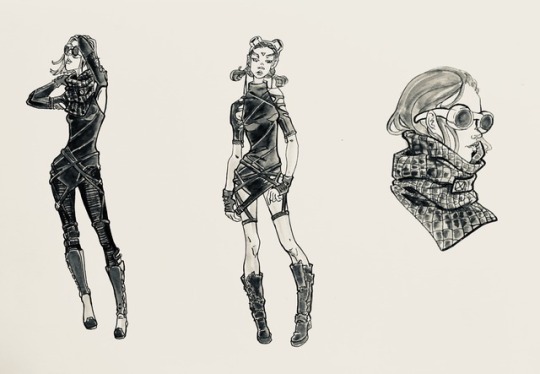

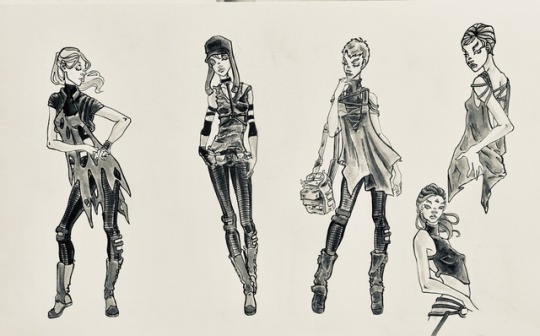
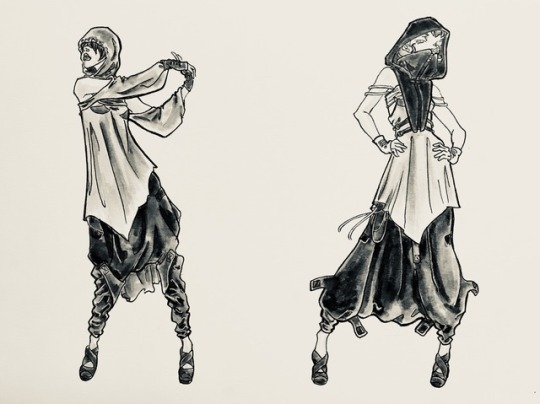
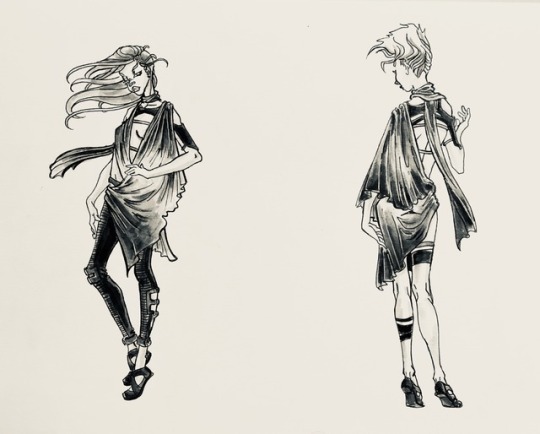
Some LEWKS from fashion illustration, or rather a fall capsule collection that I would wear myself if I were an intergalactic space provocateur (thus the inclusion of pants and a sensible heel). My partner and I debated the practicality of a drop-crotch pant I. The cockpit of a spacecraft—I and my instructor agree that the drop-crotch is totally fine, and fabulous. Besides, I’m not taking design advice from a guy who still dresses like he’s in junior high (JK, I ❤️ my partner). I tend to write long posts, and I like talking about and documenting ideation. So, I headlined each segment for easier navigation. Just some details on concepts, design process, and such. I will post more sketches, line drawings, fabric swatches, and maybe color comps later. The Assignment: Create a ten piece collection. Decide the season, demographic, include at least five different types of garments (trousers, dresses, at least one coat, etc. I also had to draw out the flats and include swatches and stuff. In the end I had to edit down from at least 20 initial sketches. Designing wearable sci-fi LEWKS comes easy to me, but self-editing does not. Take note toxic masculinity in geek culture, a girl can still be sexy in pants and a sensible heel and drawing something from the female gaze doesn’t mean a dude can’t appreciate it... I used my sensibilities as a starting point—although, in the end the collection skews a little younger than my demographic (I can get away with it as a woman of color because a WOC could be anywhere between the ages of 25 and 45 without a stranger being able to tell the difference. I’m still a little punk rock at my age, but if I had more time, I would create a companion collection that’s a little more stately and tailored for a more professional lady in my demographic (while maintaining the visual cohesion with the collection I eventually made). The instructor initially thought I was joking, because I actually submitted a market plan that said my target demographic was an intergalactic space nomad, political double-agent, listed the median income in space credits, and made several references to lasers and cyborgs. Spoiler alert, I got an ‘A’ on the final. I prefer fall to any other season, so too is my collection for fall. Fall, as a whole, has a wide range of potential garments, mostly because fall weather is so drastically varied (in spite of this, it is usually the BEST weather of any given place, IMHO). I also like fall color palettes best (as a suburban teen I spent my adolescence wearing all black, listening to Morresey, and writing really terrible poetry, like every other suburbanite teenager). Dark colors are slimming and hide a myriad of sins, accidents, and the bloodstains of your slain enemies. I wanted to include both a short and long coat/jacket, day wear, one formal piece, a jumpsuit of some kind, a mini and maxi silhouette, a work outfit, something to work as loungewear, something to work as activewear, and something that would look cool on a robot. I also wanted to strike a balance between bodycon silhouettes and easy to wear volume—which is probably why the collection ballooned into something as large as this one did—there were so many variations of single pieces that it was hard to choose which of them to include. The piece variations themselves were compelling on their own and also in comparison to its counterpart that it became more interesting to present looks as side-by-side options. Each look was multilayered, highly detailed, and designed to be physically adaptable/changeable anyway, so assigning a single croquis to a look seemed like a wasted opportunity. References and Ideation: I got the ideas for the collection from real life. One of the weird things I picked up from the military was from Basic, and it’s the idea that you are issued all of these pieces with utilitarian properties at first that encapsulates everything you’d ever need, apparel-wise (from underwear to formal wear, and for all weather and situations) and all of it can fit in a single seabag. It was fun trying to imagine what shenanigans one could experience as an intergalactic scene-girl, and what kind of clothes she might want. The concept of a sea bag (or “space bag,” in this case) jives with the idea of a capsule collection (stylish staple pieces that can be worn over many seasons with smaller, less expensive pieces that can be altered or replaced by trendier items as the seasons progress). All the pieces can be mix-and-matched and are adaptable in many ways—there is something gender neutral about a lot of it (I wish I designed the bodysuits with more variation in the briefs: make some with compression shorts, leggings, and such—I didn’t really consider these separate LEWKS, per se, but layering pieces, because some part of my underpants are always showing under my garments, and if you are going to have exposed bra straps, make it look like you did it on purpose). Also, the tailored structure and details of military clothing are really are really cool design elements to explore. I also used Middle Eastern references to balance out the designs—mostly because I thought it would be thematically appropriate/ironic to combine the two style sensibilities (non-Western cultures have so many more interesting silhouettes in any case—it might be appropriation, but in the neutral sense of the term). The concept of armor and utility informs every piece. Those concepts also the reason I referenced (or resurrected) less common clothing items and styles. For example, the quilted leather snood, a pleated leather bolero, spats over the boots, and a molded, hooded, cuirass (leather is a good material, it adapts to the wearer like a second skin and because of that, the material plays into the theme of personalizing a basic uniform to make it one’s own—90% of the swatches for the collection are organic or natural fibers because I would think the artificial environments and materials of space might make one long for something more “natural,” especially with something as intimate as the clothing that separates a persons skin from everything else. It’s also luxe and sometime more durable). Aesthetically, details like cording, high waisted pants, draped tops, high necklines, and asymmetrical hemlines reoccur as a design through line in the collection. Utilitarian features, like zippers and velcro closures, do double duty as both functional and aesthetic elements. A practical zipper on a detachable long sleeve becomes the decorative beam on the short sleeved version. Velcro tans on an exaggerated drop-crotch pant transform the garment from a maxi silhouette into short and leggings combo. I admit, this comes from my unironic love of those weird convertible bridesmaids dresses that people always end up lazily tying around their neck. Look Details (the Coverall): That’s why there is a “fashion coverall” in this collection—I know from experience that those are the comfiest work pajamas, ever, and even though this collection is supposed to exist a long time ago in a galaxy far, far away, I did want to reference some contemporary trends and needed a non-catsuit jumpsuit, and tailored coveralls seem very classic in a way that could be stylish beyond the current moment. I wanted to use design to solve actual practical problems. For example, instead of the traditional buttoned cuffs and collar, I chose to use a ribbed knit on both the neck and 3/4 sleeves. It is more comfortable and easy to wear, works just as well in a hot engineering space or in the colder climate controlled server spaces and Officer decks of a ship, and prevents the clothing from getting caught on equipment and becoming a liability on trouble calls or planet-side laser melee. The knees have built-in padding, and Velcro patch details, so our girl can switch allegiances fairly easily. The only thing is the lack of pockets. A cargo short is an amazing idea. In the abstract. I have never seen one in public that did not look like an Eldrich Abomination. If someone needs to Cary so much stuff in their pockets that their pants look like they are hiding the legs of Yogsheggoth, perhaps it’s time to consider carrying a bag. I’m looking at you, Dudes. Also, the belts and harnesses of the collection were designed with detachable pockets and specialized equipment in mind. I kind of wish I designed the piece with a jodhpur or cigarette leg silhouette instead of a boot cut. Both the jodhpurs and cigarette leg would have been more interesting, especially if I had also designed a short, romper version of the piece. Final Thoughts (for now...): I don’t expect anyone to have read all the way through this, and if you have, thanks! Feel free to contact me with any questions, requests, random musings, like, share and follow. I’ll try to be less wordy in the future. A Word of Thanks to the Fashion Illustration Class: I really enjoyed that class. Everyone of my classmates had different skills, experience, and came from a lot of different disciplines (for example, I make comics and work in advertising, some were animators, some fashion students, and one was an editorial photographer who didn’t draw well in the conventional sense of it, but drew croquis that had the character of a Mondiglioni and could convey not only the sense of the garments, but the personality of the girl who wore them). We talked about everything, asked a lot of good questions, and hyped each other up for fashion in general. I will say that out of the many years of studying various art disciplines in various classrooms and open critiques, this was the first time I experienced colleagues as open and giving as these classmates were. I’m used to a lot of pushback and blank stares during critiques (especially when I give them—I obviously talk a lot, and connect ideas to a lot of obscure references—“consider the jodhpurs,” “you seem really into minimal geometric patterning—write down ‘Ainu’ and look up their textiles and mouth tattoos,” “there is something very vaporwave about this non-binary collection, I see a lot of pastels and navy,” “I know exactly who the girl is that wears this collection—she converted an Arizona ranch into a minimal art gallery in the middle of nowhere, collects antiques from the late 1950’s and Kieth Harring prints, and makes excellent margheritas...”—and then they would use my suggestions by the next critique! WHAT!!?!), but people really listened and we all tried to understand each others point of view and encourage one another. I loved that class.
3 notes
·
View notes